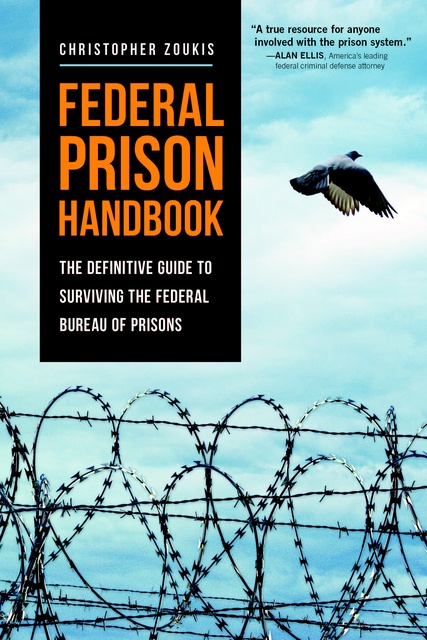Maryland Supreme Court: Trial Court Abused Its Discretion by Failing to Exercise That Discretion Where It Summarily Refused Requested Jury Instruction Because It Was a Non-Pattern Instruction and ‘Some Evidence’ Supported the Instruction
by Douglas Ankney
The Supreme Court of Maryland held that when there is “some evidence” in the record to support a requested jury instruction on an evidentiary inference, the trial court is required to exercise its discretion to determine whether to give the instruction, and if the trial court refuses to consider a requested non-pattern jury instruction solely because it was not a pattern instruction, it is an abuse of discretion.
Background and Procedural History
Isiah H. Hollins was tried by jury on charges of attempted first-degree murder and related assault charges for an altercation with Alexander Alvarenga during which Hollins stabbed Alvarenga in the head several times with a pocket knife. Hollins claimed self-defense. Because the two men gave conflicting accounts as to who was the initial aggressor, Hollins introduced evidence that Alvarenga had a propensity for violence:
Alvarenga admitted that he had been in three or four fights in the past,
Alvarenga stated that he believed that “everybody fights,”
Alvarenga had two prior second-degree assault convictions, and
on the day of the incident giving rise to the current charges against Hollins, Alvarenga asked Hollins “to step outside and fight like men do.”
Based on this evidence, Hollins requested a special jury instruction that read: “You have heard testimony about Alexander Alvarenga’s character trait for violence. You should consider this evidence with all the other evidence in this case. You may decide that it is likely that a person possessing a character trait for violence was the initial aggressor.”
The circuit court, without undertaking any analysis of the evidence, refused to give the requested instruction because “it [wa]s obviously a non-pattern instruction….” Hollins was acquitted of attempted first-degree murder and first-degree assault but was convicted of second-degree assault. The circuit court imposed a sentence of 10 years’ imprisonment with two years suspended followed by five years on probation upon release. Hollins timely appealed.
A divided panel of the Appellate Court of Maryland affirmed in an unpublished decision. While that court agreed with Hollins that the circuit court erred in failing to give the requested instruction simply because it was a non-pattern instruction, the majority concluded that Hollins failed to produce sufficient evidence to support the requested instruction. The Maryland Supreme Court then granted Hollins’ petition for a writ of certiorari.
Analysis
The Court began its analysis by noting the State agrees with Hollins that the circuit court’s rationale for not providing the requested jury instruction—that it was not a pattern instruction—was an abuse of discretion, and the Court agreed with that position. See Fleming v. State, 818 A.2d 1117 (Md. 2003) (explaining that a “trial judge is required to give a requested instruction that correctly states the applicable law and that has not been fairly covered in other instructions”). Because the reason for failing to give the request instruction constituted an abuse of discretion, the Court turned to the issue of whether there was some evidence in the record to support the instruction.
The Court stated that in a criminal trial, the trial court “may, and at the request of a party shall, instruct the jury as to the applicable law and the extent to which the instructions are binding.” Md. Rule 4-325(c). Regarding instructions on the law, the trial court is required to give them; these include instructions on the burden of proof, presumption of innocence, and elements of the charged offense. Harris v. State, 182 A.3d 821 (Md. 2018). On the other hand, instructions regarding “facts and factual inferences are normally not required.” Patterson v. State, 741 A.2d 1119 (Md. 1999).
The Court stated that Hollins’ requested “character trait for violence” jury instruction “is the type of inferential instruction that is not required to be given even if generated by the evidence.” But it must decide whether there was “some evidence” in the record “to generate the instruction,” and if so, whether it was an abuse of discretion by the circuit court in failing to exercise its discretion. That is, there must be “some evidence” in the record to support giving the inferential instruction. Harris. In determining whether there was “some evidence,” the Court reviews the evidence in the light most favorable to the defendant. See Dykes v. State, 571 A.2d 1251 (Md. 1990).
The “some evidence” standard was explained in Dishman v. State, 721 A.2d 699 (Md. 1998), as follows: “The determination of whether an instruction must be given turns on whether there is any evidence in the case that supports the instruction … The task of this Court on review is to determine whether the criminal defendant produced that minimum threshold of evidence necessary to establish a prima facie case that would allow a jury to rationally conclude that the evidence supports the application of the legal theory desired.” It is a low threshold to clear, Arthur v. State, 24 A.3d 667 (Md. 2011), and requires what its name implies—“some” evidence, as that term is understood in common, everyday usage. Dykes. It does not require “beyond a reasonable doubt” or “clear and convincing” or even “preponderance.” Id. The Dykes Court explained that the “source of the evidence is immaterial; it may emanate solely from the defendant.”
The Court stated that it “is well settled that a trial judge who encounters a matter that falls within the realm of judicial discretion must exercise his or her discretion in ruling on the matter.” Gunning v. State, 701 A.2d 374 (Md. 1997). It must be clear from the record that the trial court exercised that discretion. Nelson v. State, 553 A.2d 667 (Md. 1989). If the trial court fails to exercise its discretion, that error “ordinarily requires reversal.” Maus v. State, 532 A.2d 1066 (Md. 1987).
The Gunning Court ruled that the trial court abused its discretion by refusing to give an eyewitness identification instruction because the refusal “was not grounded on the exercise of judicial discretion; rather, the record in each case is clear that the denial was based on the application of a uniform policy, a policy which arose from the judge’s personal belief that identification instructions are not ‘appropriate.’”
Turning to the present case, the Court determined that Hollins presented sufficient evidence to satisfy the “some evidence” standard to support giving the requested instruction based on the following: (1) Alvarenga admitted that he had been in three or four fights in the past, (2) Alvarenga stated that he believed that “everybody fights,” (3) Alvarenga had two prior second-degree assault convictions, and (4) on the day of the incident giving rise to the current charges against Hollins, Alvarenga asked Hollins “to step outside and fight like men do.”
Like the trial court in Gunning, the circuit court in this case refused to give an instruction because it was a “non-pattern instruction,” which was “akin to adopting a uniform policy,” according to the Court. Nothing in the record demonstrated that the circuit court exercised its discretion in considering whether “some evidence” supported giving the requested instruction. Thus, the Court held there was “some evidence” presented that Alvarenga had a propensity for violence and that a rational jury could conclude that he was the initial aggressor, and the circuit court abused its discretion by failing to decide whether to give the requested jury instruction.
Conclusion
Accordingly, the Court reversed the judgment of the Appellate Court and remanded the case for a new trial with instructions that, if “some evidence” is introduced concerning Alvarenga’s propensity for violence, the circuit court must exercise its discretion to determine whether to give the requested jury instruction. See: Hollins v. State, 328 A.3d 798 (Md. 2024).
As a digital subscriber to Criminal Legal News, you can access full text and downloads for this and other premium content.
Already a subscriber? Login





